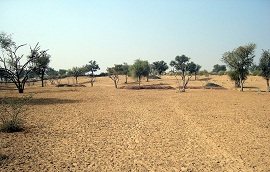List of districts in Sindh
It provides an inclusive collections of beautiful pictures of Sindh and all of the famous and attractive visiting places there. Travel guide about Sindh is also available to visit various visiting places there to enjoy the best and memorable moments of your life while exploring there.
-

Tharparkar
Desert AreasTharparkar is situated at a distance of 407 km from Karachi and is accessible via Mirpur Khas on Naukot-Jhuddo road. It is the largest district by area in Sindh Province, but least developed district due to all of its area is part of the Thar Desert.
Visiting Locations in Tharparkar -
Thatta
Historical SitesThatta is located on the right bank of the Indus River at the distance of 103 km from Karachi on the National Highway N5. It is a historical city of Sindh and was the medieval capital of Sindh in different dynasties of the past.
Visiting Locations in Thatta -
Umerkot
Mughal Historical SitesUmerkot, also known as Amarkot, is situated at a distance of 308 km from Karachi and is accessible via Mirpur Khas on the National Highway N-120. Umerkot has its importance due to the birthplace of Akbar, the Mughal Emperor, in Umerkot Fort. It has majority of non-Muslim population in Pakistan.
Visiting Locations in Umerkot
About Sindh
Sindh is the third largest province by area, whereas by area, its number is second. It is situated in the southeast region of Pakistan. The importance of Sindh is the sea port in Karachi, which is hub for international trade in Pakistan.
Its landscape consists of alluvial plains along the Indus River, on the eastern part, the most of the land is within the Thar Desert, and the mountaineous area in the western part is known as the Kirthar Mountains.
The climate of Sindh is normally hot in summers and mild in winters.
Sindh was also remained part of the Indus Valley Civilization in 3000 BC, its remainss were discovered in Moan-jo-Daro and Harappa, which shows the well organized civilization at that time. Muhammad bin Qasim conquered it in 711 and introduced Islam in Sub-Continent, and it became a state in the Umayyad Caliphate. Then it remained part of the Mughal Empire.